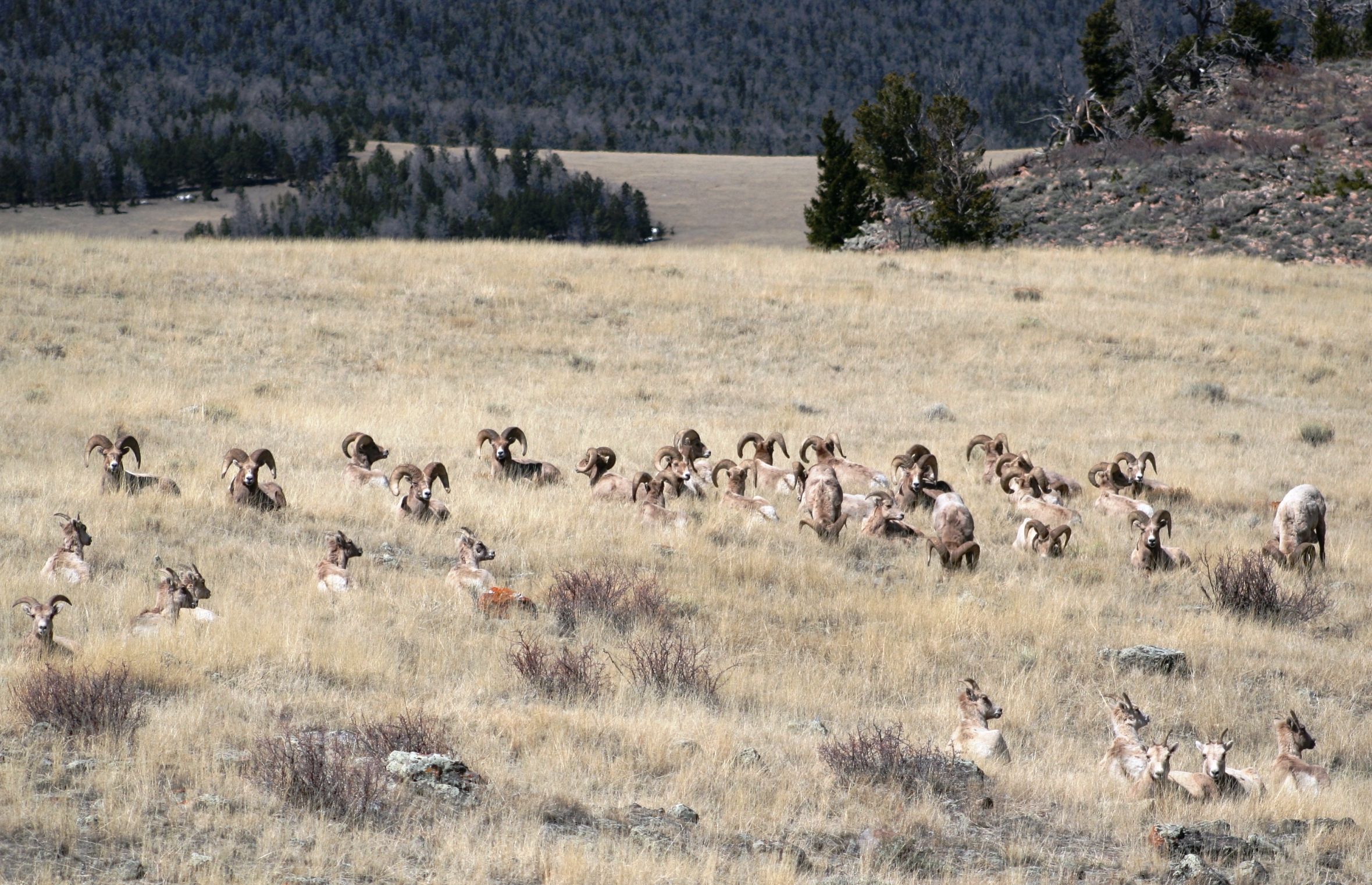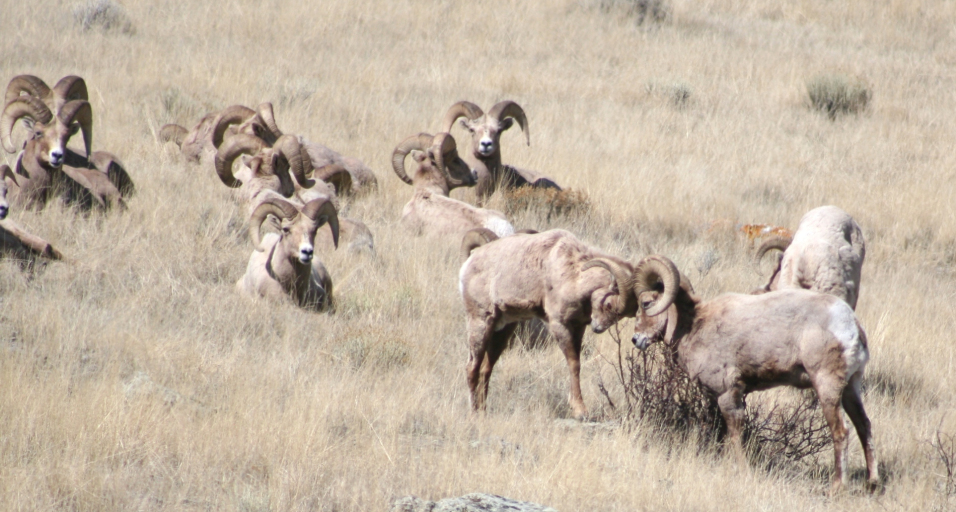Collaboration will be sought for management of bighorn sheep herd
The Wyoming Game and Fish Department in partnership with the Wyoming Wild Sheep Foundation, the National Bighorn Sheep Interpretive Center, and the University of Wyoming’s Ruckleshaus Institute is announcing a public engagement process to explore management concerns, issues, and opportunities for the Whiskey Mountain Bighorn Sheep herd.
This herd has struggled to recover from a catastrophic all-age die-off caused by pneumonia in 1991 causing an estimated 30% decline in the number of sheep. The herd continues to stay below the desired population size primarily because lamb survival is very low likely due to the persistence of lamb pneumonia. At one time, there were an estimated 2,500 sheep in this population; today there are about 750.
 “The bottom-line is, we simply don't have the answers how to turn this important bighorn sheep population around,” says Daryl Lutz, Lander’s wildlife management coordinator. “There is much to be learned how to best address this decline and perhaps implement management strategies and projects to attempt to arrest and reverse this trend,” says Lutz. “To do this, it is clear we must consider a different approach.”
“The bottom-line is, we simply don't have the answers how to turn this important bighorn sheep population around,” says Daryl Lutz, Lander’s wildlife management coordinator. “There is much to be learned how to best address this decline and perhaps implement management strategies and projects to attempt to arrest and reverse this trend,” says Lutz. “To do this, it is clear we must consider a different approach.”
This approach will include a formal collaboration process and include all who are passionate and knowledgeable about the species. The process will begin sometime later this summer or early fall with a “situation assessment” that will help tailor the collaborative process. Then, a series of workshops will be held with all those interested in this herd and bighorn sheep specialists from around the country to begin to chart a path forward to reverse the declining trend in this iconic bighorn sheep herd.
More information on how to be involved will be released this fall. If you have questions, please contact Daryl Lutz at 307-335-2616.
This herd has struggled to recover from a catastrophic all-age die-off caused by pneumonia in 1991 causing an estimated 30% decline in the number of sheep. The herd continues to stay below the desired population size primarily because lamb survival is very low likely due to the persistence of lamb pneumonia. At one time, there were an estimated 2,500 sheep in this population; today there are about 750.
This approach will include a formal collaboration process and include all who are passionate and knowledgeable about the species. The process will begin sometime later this summer or early fall with a “situation assessment” that will help tailor the collaborative process. Then, a series of workshops will be held with all those interested in this herd and bighorn sheep specialists from around the country to begin to chart a path forward to reverse the declining trend in this iconic bighorn sheep herd.
More information on how to be involved will be released this fall. If you have questions, please contact Daryl Lutz at 307-335-2616.
Rene Schell 307-332-2688

